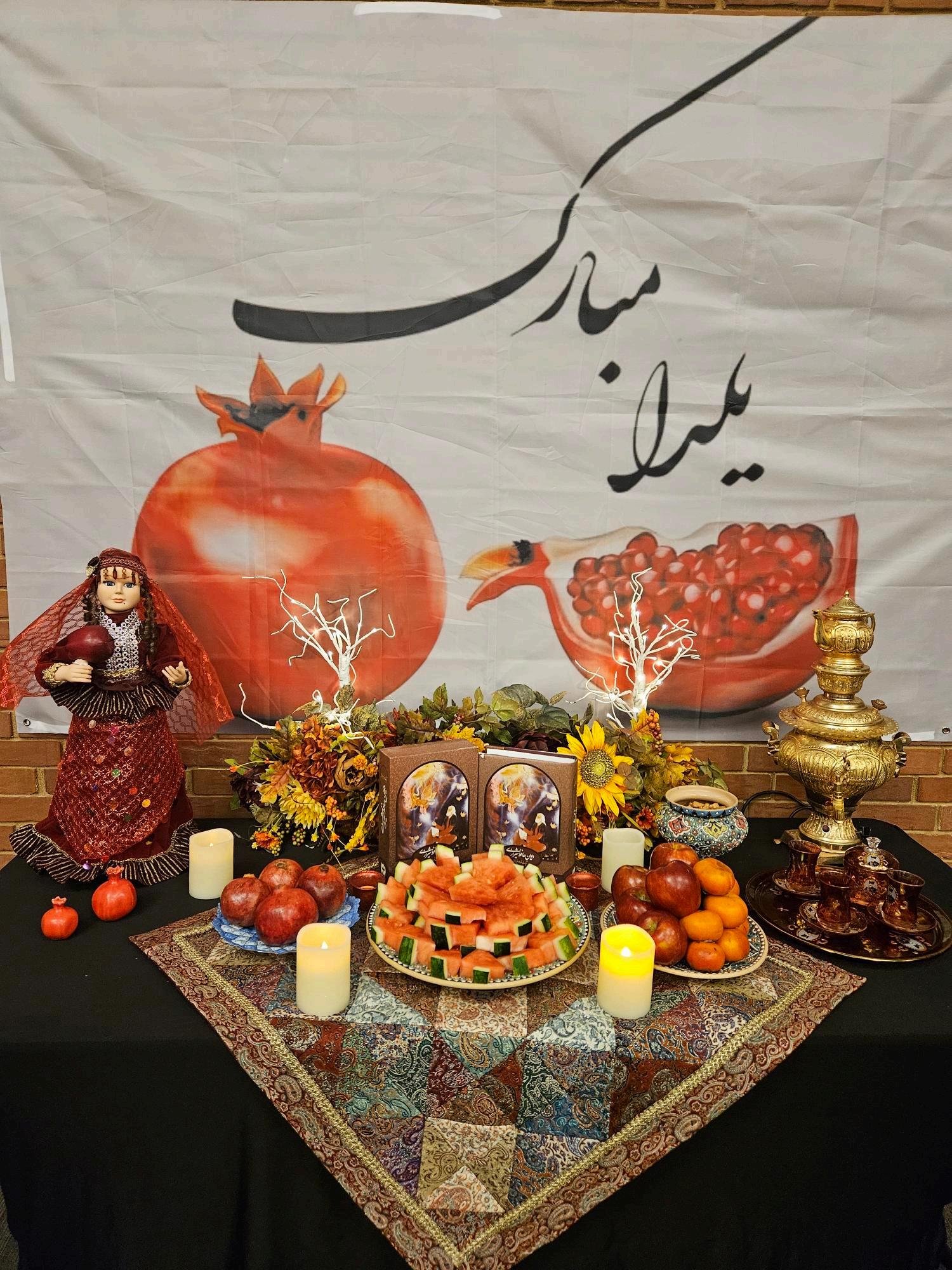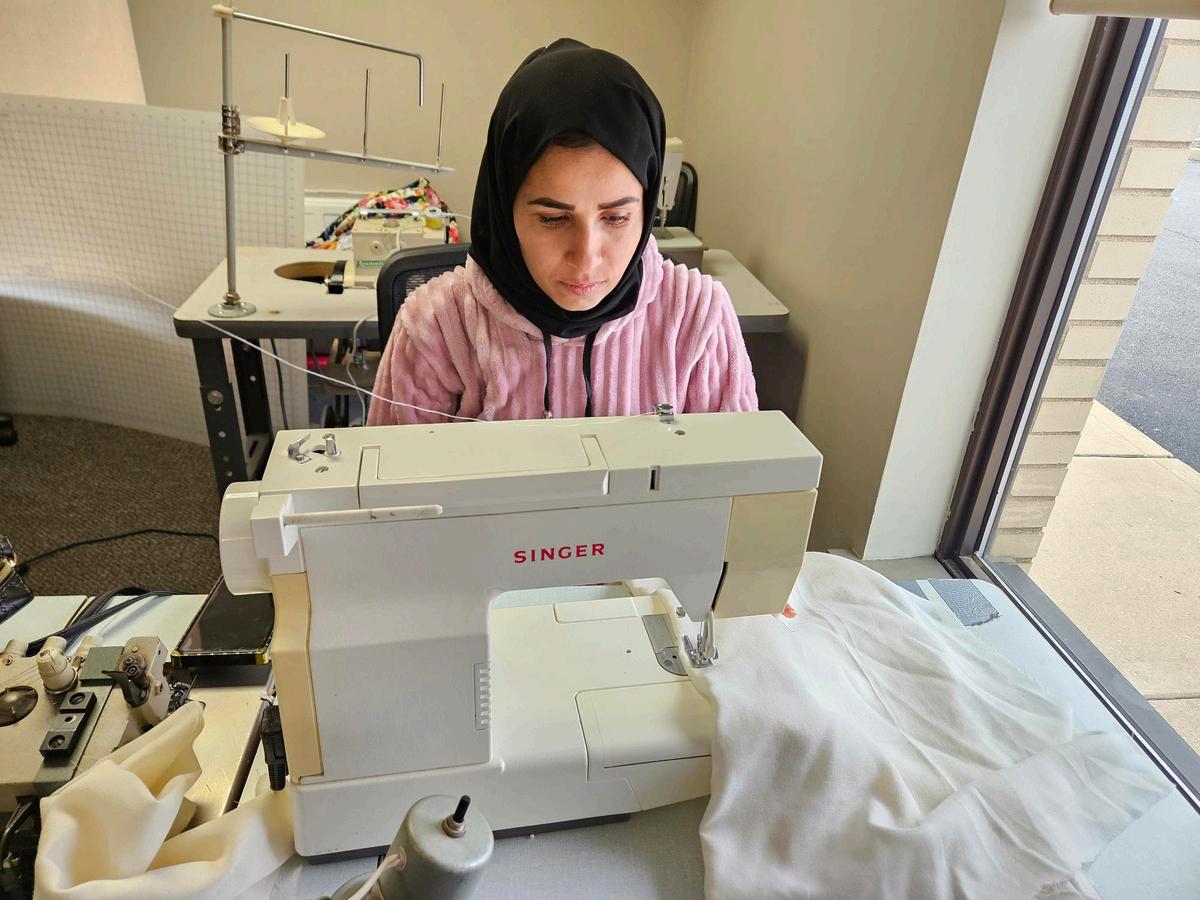

ShabeYaldais








ShabeYaldais





St. Louis offers a welcoming environment for Afghan immigrants seeking new opportunities and a better life. The city blends affordability, community support, and a rich cultural atmosphere, making it an appealing destination. St. Louis is home to a growing Afghan community, where many newcomers have found a sense of belonging and connection
Economic Opportunities: St. Louis has a strong job market, with opportunities in healthcare, manufacturing, education, and technology Afghan immigrants can find work in these sectors, building stable careers and improving their economic standing.
Affordable Living: St. Louis offers a relatively low cost of living compared to other major U S cities With affordable housing, utilities, and transportation, Afghan families can start fresh without the financial pressures often found in larger urban centers. For instance, the median home price in St. Louis is approximately $225,000, and the average monthly rent for a two-bedroom unit is around $1,020.
Cultural Support and Integration: The city also offers a rich cultural scene, with local organizations providing resources such as language classes, job training, and legal assistance to help Afghan immigrants adjust to life in the U S The St Louis metropolitan area saw a 23.2% increase in its foreign-born population from 2022 to 2023, reflecting the city's growing diversity and commitment to supporting immigrants.
For more information about the Afghan Support Program and the services it offers, read the next issue of the Afghan Journal.

I’In the 1990s, due to the civil unrest and conflicts in Afghanistan, my family and I immigrated to Pakistan. I went to a private school there, but I didn’t understand the local language, Urdu, at first It was tough, but through hard work and determination, I overcame those challenges and succeeded academically.
In 2001, after the fall of the Taliban regime, I returned to Afghanistan and started working there In 2014 my family and I were granted an SIV (Special Immigrant Visa) to come to the United States.
We arrived in St Louis, Missouri, in 2014, and the adjustment was a big challenge I was prepared for life in the U S , but it was much harder for my wife and children They weren’t familiar with Western culture or the English language, and I found myself juggling full-time work while helping my family adjust to their new life. At one point, I even thought about going back to Afghanistan because the transition was so overwhelming for them I remember my initial resettlement in St. Louis was not easy or straightforward for my family and me. The only organization I knew about at the time was the International Institute, the resettlement agency. Our Afghan community was relatively small back then, and there wasn’t much collaboration or support Thriving and finding our way in St louis was something I had to work hard for


Since 2014, St. Louis has become much more welcoming to refugees and immigrants; it’s a city rich in diversity and multiculturalism.
I’ve discovered that St Louis has multiple nonprofit agencies helping refugee and immigrant populations In March 2023, I took a job with Monarch Immigrant services as a program coordinator. I also have many friends and former colleagues who work with the immigrant population in other states
When we talk about the experience of immigrants and refugees, I can confidently say that St. Louis, Missouri is one of the most welcoming and respectful cities. This sentiment supports what I hear from others across the country Additionally, the cost of living here is significantly lower compared to other states, I firmly believe there are more job opportunities and resources to help people thrive than other urban areas
One of the reasons we chose St. Louis was because our family members have lived here for decades St Louis has been a welcoming place for us, and there are many things I’ve come to love about it. The weather here reminds me of home because we also experienced all four seasons in Afghanistan I enjoy the beautiful parks and greenery in St Louis, which is a nice contrast to my home country, where natural beauty comes from the majestic mountains rather than lush parks
In conclusion, my journey from Afghanistan to St Louis, Missouri under the SIV program has been filled with challenges, resilience, and growth Despite the initial hardships of navigating life in a new country, St Louis has proven to be a welcoming and supportive city for refugees and immigrants. My personal experience, along with my work supporting immigrant papulations, reinforces my belief that St. Louis is a city that truly embraces newcomers and offers a path to success through hard work and determination.

Life in the U.S. offers many freedoms and opportunities, but what I miss most about my homeland is the strong social bonds In Afghanistan, family life was much closer-knit and brothers, sisters, parents, and extended relatives lived closely together Unfortunately, because of the conflict, my family has scattered across the world
I still prefer traditional Afghan dishes like Qabli Palau, Mantu, and Bolani, which remind me of home, but I’ve also come to enjoy pizza!
Despite everything, I am grateful for the journey that brought me here St Louis has become home, and I’ve learned to appreciate the little things, like a peaceful walk in the park or watching my favorite sports MMA and cricket
Thank you for listening to my story. I hope it inspires you to appreciate your own journey and to embrace others who may be walking a different path

Korma is a beloved Afghan stew, known for its rich flavors and tender meat. Typically made beef, or chicken, it combines aromatic spices and vegetables, slow-cooked to create a hearty, dish. This flavorful stew is often served at family gatherings and special occasions.
Korma features meat (usually lamb), spices like cumin, coriander, cardamom, and cinnamon, and onions, garlic, and tomatoes. The addition of yogurt or cream creates a creamy texture, while c mint add a refreshing touch.
The meat is browned and then slow-cooked with spices and vegetables for several hours, a flavors to meld and the meat to become tender. The result is a stew with deep, rich flavors. Korma is traditionally served with steamed basmati rice, which soaks up the flavorful sauce, m perfect accompaniment. The dish is ideal for gatherings, representing both the richness of Afg and the warmth of Afghan hospitality
Korma is more than just a meal—it is a symbol of togetherness. In Afghan culture, cooking a korma strengthens family bonds and celebrates tradition. This dish remains a staple, enjoy comforting nature and its role in bringing people together.
Sara Gholami Kouhi Gholami-kouhis@iistl org



Shabe Yalda, celebrated on the winter solstice, is one of Afghanistan's most significant cultural events, marking the longest night of the year and the gradual return of light. Occurring around December 21st or 22nd, this night symbolizes the triumph of light over darkness as the sun begins its journey toward longer days. It’s a time for families to gather, share meals, tell stories, and celebrate warmth, togetherness, and the coming of light
One of the key traditions during Shabe Yalda is fortune-telling, where families open a book of Hafez's poetry to a random page The poem that appears is interpreted for guidance and predictions for the year ahead. This practice is deeply rooted in Persian and Afghan culture, offering wisdom, hope, and sometimes answers to personal questions.
Fruits play a central role in the celebration, each carrying profound symbolism:
Pomegranates are a symbol of vitality, fertility, and abundance. Their bright red seeds represent new beginnings, growth, and the continuation of life.
Watermelon, with its refreshing sweetness, signifies health and renewal. Its bright red color connects it to vitality, marking the return of warmth and the sun's power after the longest night.
Nuts, known as ajil, such as almonds, pistachios, and walnuts, symbolize prosperity, wisdom, and longevity. These foods remind people of the abundance that follows the darkest period of the year, much like the earth itself becomes fruitful again after the winter solstice.

Shabe Yalda is not only about nourishing the body but also the soul. Lighting candles or small bonfires is a common practice to symbolically ward off evil spirits and celebrate the triumph of light Elders often share ancient stories passed down through generations, preserving cultural heritage and fostering a sense of connection with the past.
Beyond the rituals and symbolism, Shabe Yalda carries deep cultural significance The 1 to 3 minutes of additional daylight following the longest night serve as a powerful reminder that every moment counts It’s an opportunity to reflect on how we can increase our acts of love, kindness, and generosity toward one another. Just as the darkness gradually gives way to light, our small acts of care and compassion can bring brightness to the world around us.
This celebration encourages Afghans to connect with their roots, reinforce familial bonds, and embrace the optimism of a new year filled with hope, light, and community. Shabe Yalda is a reflection of the power of nature, the enduring cycle of life, and the promise of brighter days ahead. Sara




g , y y , e capital of Samangan province. There is some debate about its age. According to some sources, it dates back to 3500 BC, during the Buddhist era, while the renowned French archaeologist and orientalist, Maurice Foucher, considers it to be from the 5th century AD This site is one of the most important and ancient structures from the Buddhist period, holding both material and spiritual significance for the people of Afghanistan and humanity as a whole. The circumference of the base of the site measures 85 meters, and surrounding it are caves and numerous chambers where Buddhists once kept their idols and used the space as a temple. These rooms also served as a place for storing their treasures.
Today, 15% of the caves and rooms surrounding Takht-e-Rustam have been damaged, and the Takht itself, as well as the surrounding area, requires restoration There are also mines located near these caves and rooms. Small ponds were once constructed around the site for its protection, but over time, they have dried up and disappeared, leaving only their traces behind.
This historical site attracts both local and international tourists, but the people of Samangan are worried about the preservation of this significant and ancient monument. They have repeatedly called for help to ensure that attention is given to its restoration and reconstruction. According to Tolo News, locals have mentioned that construction work had started under the previous government, but after its downfall at the hands of the Taliban, the project was halted, and there has been no progress since.
The grandeur of Samangan, along with the legendary figures of Rustam and Tahmineh, is famously depicted in Ferdowsi's Shahnameh Takht-e-Rustam stands with such majesty just two kilometers from the heart of Aybak, the capital of Samangan, that it seems as though Rustam himself constructed it to stand for eternity. The people of Afghanistan believe that Takht-e-Rustam was built by Rustam, and that Zoroaster lived there for ten years. According to popular belief, Rustam, the hero of th Shahnameh, constructed the Takht for himself Tahmineh, the daughter of the king of Samangan, also built the surrounding rooms They later celebrated their wedding ceremony at this site Some even say that Rustam issued his commands on this stone or platform
In Afghanistan, particularly in the northern regions, many relics from the time of Buddha still exis Takht-e-Rustam in Samangan is one of the oldest and most significant of these remains Unfortunately, over time, and due to the lack of protective walls, this structure has gradually deteriorated. Its location by a busy road, where vehicles frequently pass, has further contributed to it decay. Despite all of this, Takht-e-Rustam still stands firm and welcoming to visitors.



epreneurship Grant Competition Winners Ceremony took place on December 11:00 AM to 2:00 PM at the International Institute of St Louis The event chievements of Afghan entrepreneurs, featuring the presentation of awards, rtunities with local business leaders, and refreshments


Among the winners is Amin Amarkhill, founder of HandyFix LLC, a business offering reliable, high-quality home and repair services.
Amin arrived in the USA on March 15, 2023, with a vision to create something meaningful. Just one year later, in March 2024, he founded Handy-Fix, initially relying on Facebook ads and word of mouth for growth
Amin received a $15,000 grant as part of the competition's final round, which is a significant milestone for his business He expresses gratitude to Green Michael, Kent Hirschfelder, and Madeleine for their trust and referrals, which were essential in the company's success. He also thanks everyone who supported Handy-Fix from the beginning
Amin is particularly thankful to the International Institute of St. Louis for its invaluable support, which has been vital to Handy-Fix’s growth Today, the company continues to thrive, and Amin remains committed to maintaining the high level of dedication and quality his clients expect.
The ceremony honored the hard work of Afghan entrepreneurs like Amin, whose contributions are helping drive local economic growth and fostering continued innovation and success






On December 6, 2024, the Afghan Support Program proudly celebrated the achievements of the first cohort of graduates from the Afghan Women’s Sewing Class. Held at the Internationa Institute, the ceremony marked a significant milestone in empowering Afghan women in St Louis through skill-building and entrepreneurship
The Afghan Women's Sewing Class, launched on September 23, 2024, in collaboration with the International Institute St Louis and Afghan Support Program aims to teach Afghan women practical sewing skills and provide them with the tools to start their own businesses The program, which also includes a financial literacy class, is designed to support the participants not only in learning the technical aspects of sewing but also in understanding key financial processes, budgeting, and the steps to open their own businesses.

The graduates of the first class were celebrated for their hard work, dedication, and commitment to the program After completing the courses, the students were awarded certificates recognizing their newly acquired skills. Two graduates have already launched their own businesses, using the knowledge and tools they gained during the program. This success reflects the program's mission to empower Afghan women by providing them with the confidence to become financially independent and entrepreneurial
The celebration event was a joyful occasion, with the graduates sharing their stories of perseverance, growth, and success. The guests, including family members, community leaders, and supporters, applauded the women for their achievements and recognized the program's role in enhancing the lives of Afghan women in the community. The event also served as an opportunity to encourage further participation in the program, with new cohorts beginning in the coming months.
The Afghan Women's Sewing Class does more than just teach a craft; it fosters a sense of empowerment, community, and independence. As one participant shared, “This class gave me the skills to take control of my future. I feel more confident and ready to start my own business.” The program offers a comprehensive approach to social integration and personal empowerment, preparing Afghan women to thrive in a new environment while celebrating their culture and talents



The Afghan Support Program is thrilled to announce that the second cohort of our highly anticipated sewing classes will begin on January 28. This program is designed to provide Afghan women with valuable skills that will help them build a future of independence and success. We will offer two classes focused on basic sewing skills and one advanced class for those who wish to further refine their expertise.
Our mission is to empower Afghan women by equipping them with the tools they need to thrive, both personally and professionally. These classes aim to give participants the confidence and knowledge to become financially independent, pursue their entrepreneurial dreams, and contribute meaningfully to their communities
The sewing classes will teach valuable technical skills while also supporting students' entrepreneurial goals. We are offering a one-hour financial literacy session to cover budgeting, saving, and starting a small
business. By combining sewing with financial education we aim to prepare students to successfully
IF YOU ARE INTERESTED IN PARTICIPATING IN THE SECOND COHORT OF SEWING CLASSES OR WOULD LIKE MORE INFORMATION, PLEASE REACH OUT TO US AT GHOLAMI-KOUHIS@IISTL.ORG

